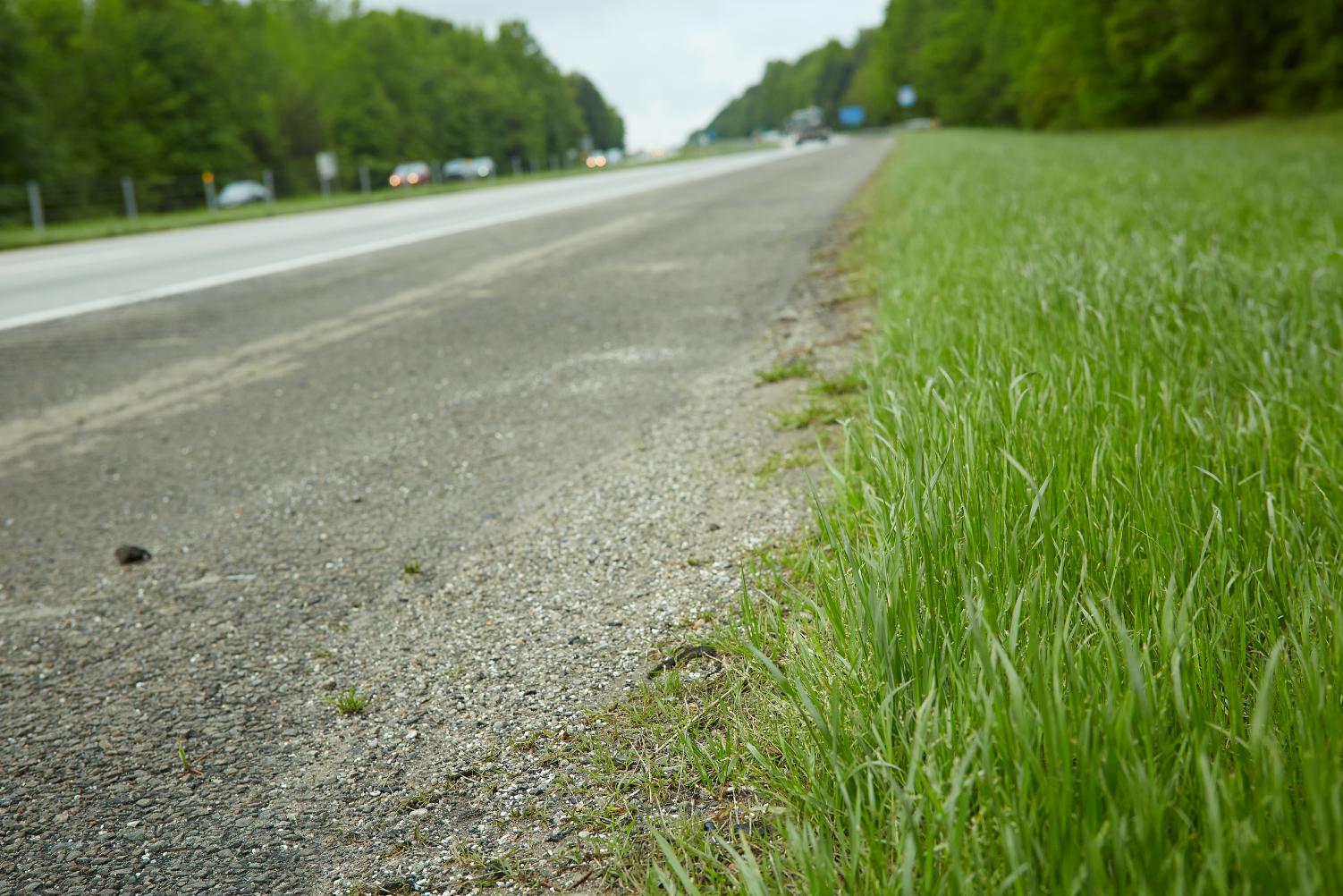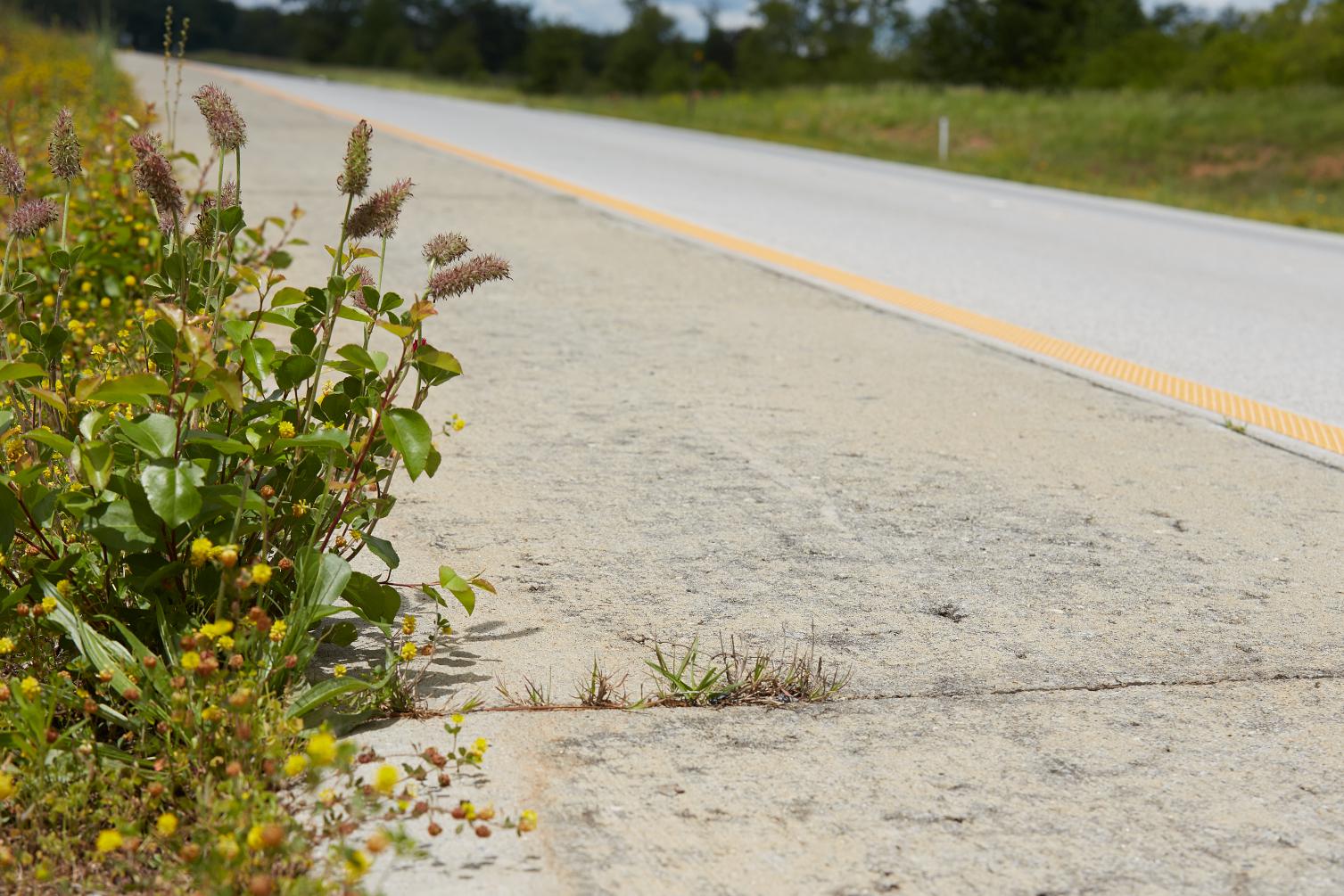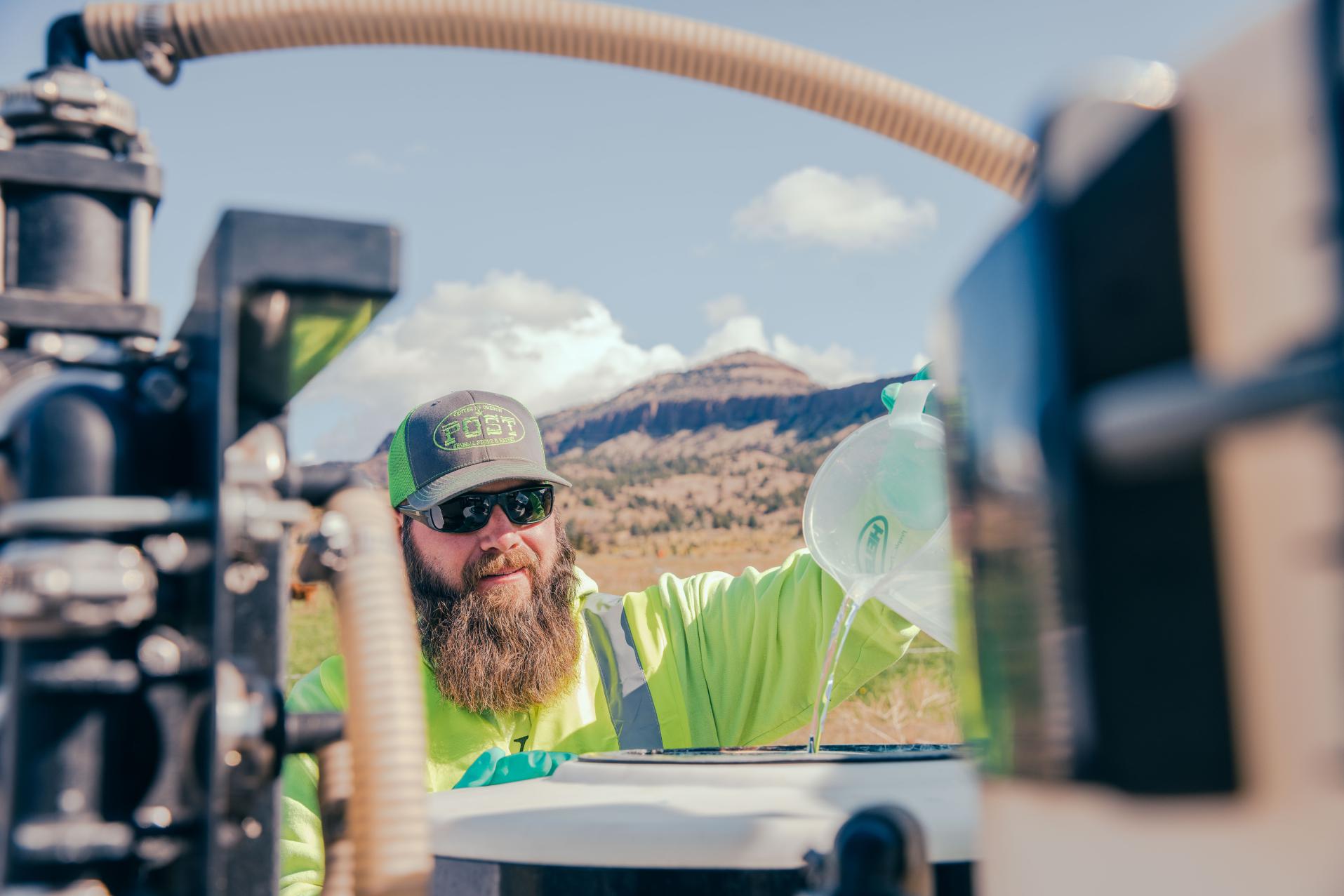Best Practices for Bareground Results

Learn how certain strategies for total vegetation control can protect transportation infrastructure, increase productivity and improve the cost efficiency of roadside vegetation management programs.
Learn how certain strategies for total vegetation control can protect transportation infrastructure, increase productivity and improve the cost efficiency of roadside vegetation management programs.
Undesirable plants can cause a variety of issues throughout roadside rights-of-way. Vegetation exceeding heights of 30 inches can reduce the hydraulic capacity of roadside ditches and present hazards in vehicle recovery areas. Similarly, brush species near the edge of a right-of-way (ROW) can interfere with sight distance and impede the development of native plant communities that represent biodiverse habitat for pollinators and other wildlife species. While roadside vegetation managers work to support the development of beneficial grasses and forbs in these areas to prevent future issues caused by incompatible weeds and brush species, roadways and gravel shoulders represent areas where total vegetation control (TVC) is essential.
Effectively maintaining bareground results in this vegetation-free zone is essential for departments of transportation and their contract partners. That’s because the presence of plants in this area can jeopardize the integrity of roadway infrastructure and generate recurring treatment requirements that can deplete annual resources.

Bareground herbicide applications can effectively control undesirable plants on roadways and gravel shoulders. As a result, this chemical-based strategy can reduce re-treatment costs, protect transportation infrastructure and increase productivity for roadside vegetation management professionals, who are often asked to do more with less each year.
The following guidelines can help professionals make the most of herbicide treatments and enhance results for total vegetation control programs:


In addition to impacting your ability to maintain lower application use rates, the products and treatment options you use can significantly influence the efficacy and cost efficiency of your TVC program. Using these best management practices to achieve bareground results also can increase your operational freedom, which allows you to prioritize work and resources for at-risk sites or other programmatic needs.
To learn more about industry-leading products and TVC strategies that help vegetation managers deliver long-lasting results, enhance safety and improve cost efficiency, visit BetterBareground.com.
Piper® is a trademark of Valent U.S.A. LLC. Piper® EZ is not registered for sale or use in all states. Under normal field conditions, TerraVue® is nonvolatile. TerraVue has no grazing or haying restrictions for any class of livestock, including lactating dairy cows, horses (including lactating mares) and meat animals prior to slaughter. Label precautions apply to forage treated with TerraVue and to manure and urine from animals that have consumed treated forage. TerraVue is not registered for sale or use in all states. Contact your state pesticide regulatory agency to determine if a product is registered for sale or use in your state. Consult the label for full details. Always read and follow label directions.
For over 30 years, Vistas® has covered strategies, trends and stories from across the Vegetation Management industry.